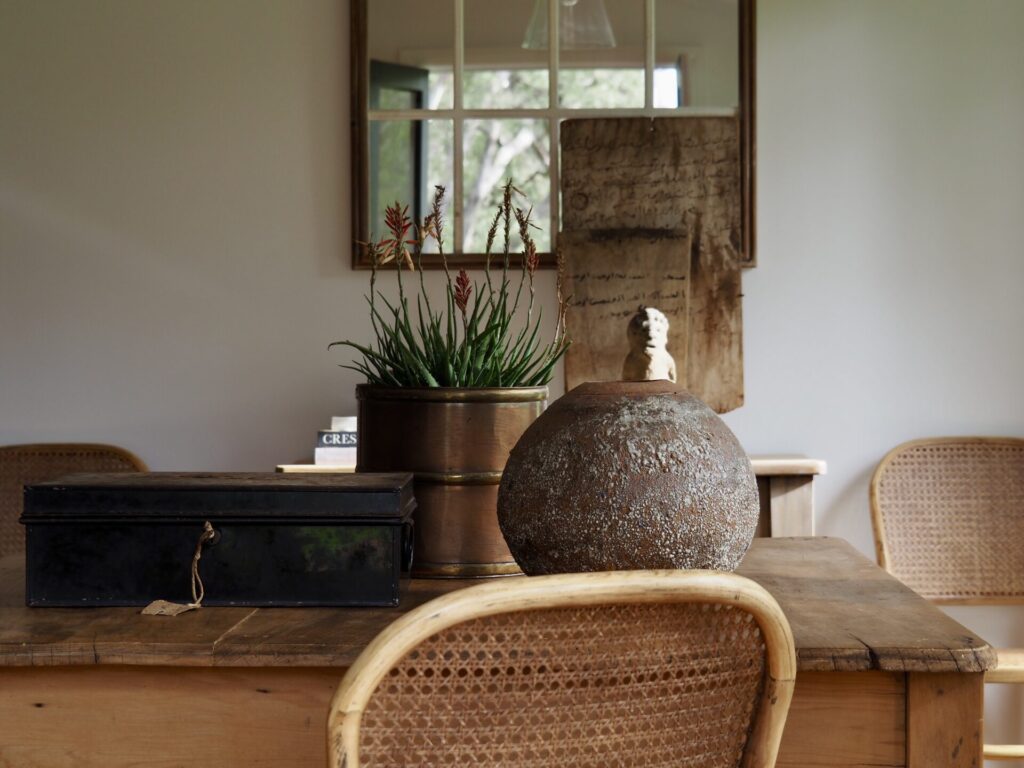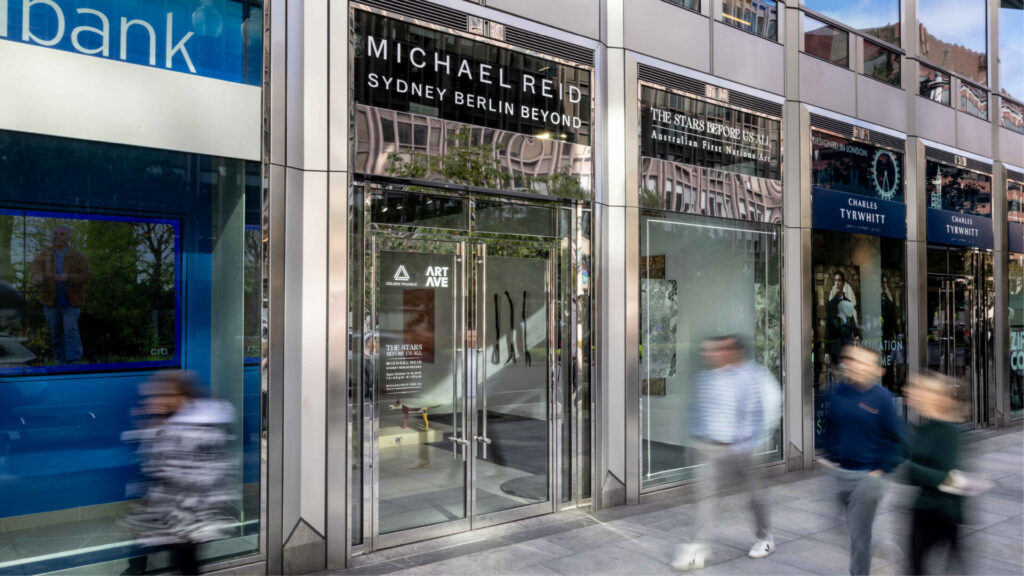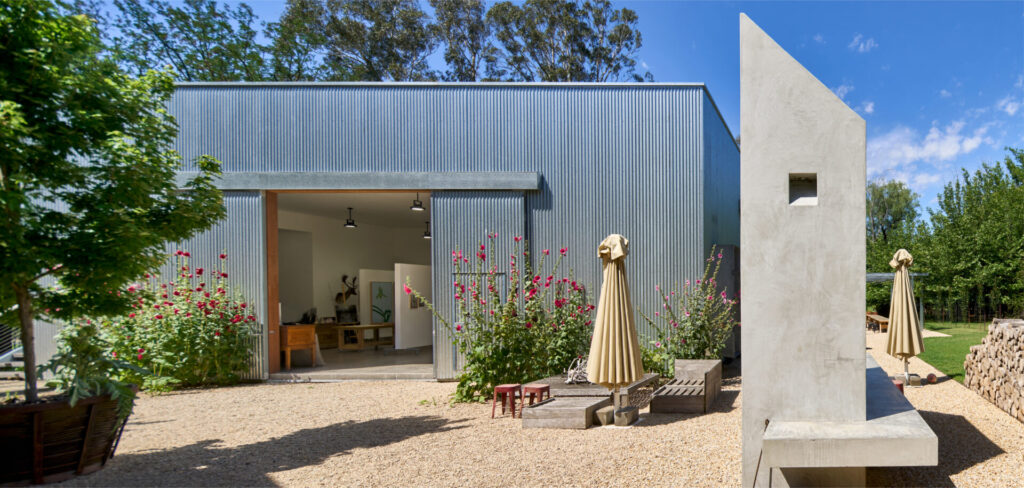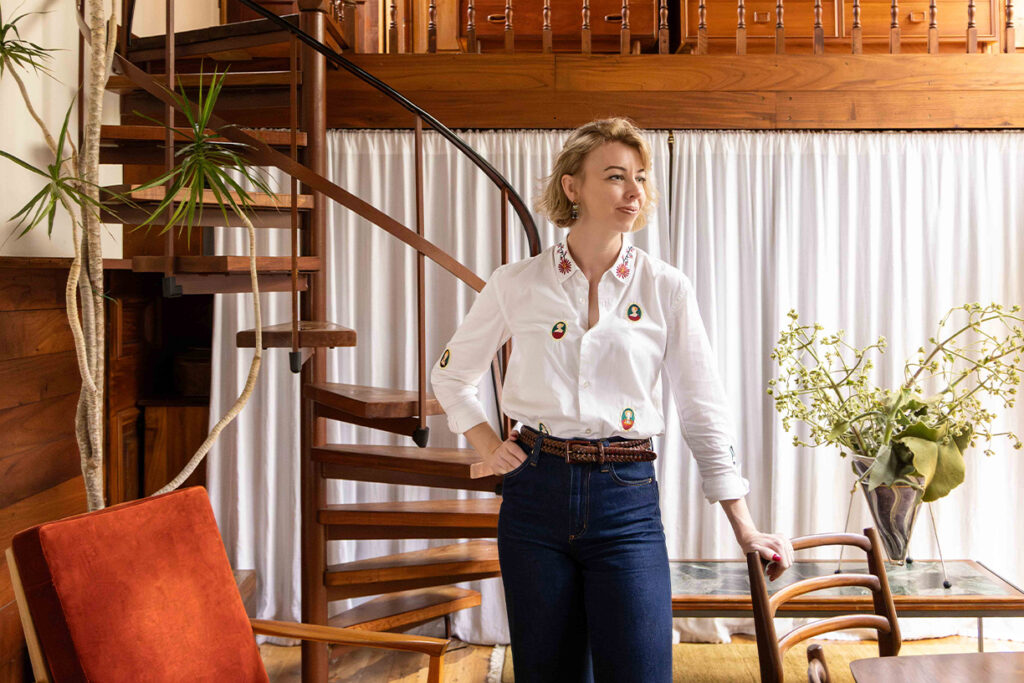A creative life: Charlotte Drake-Brockman
We visit artist Charlotte Drake-Brockman, who has called Murrurundi home for more than 40 years, in her studio.
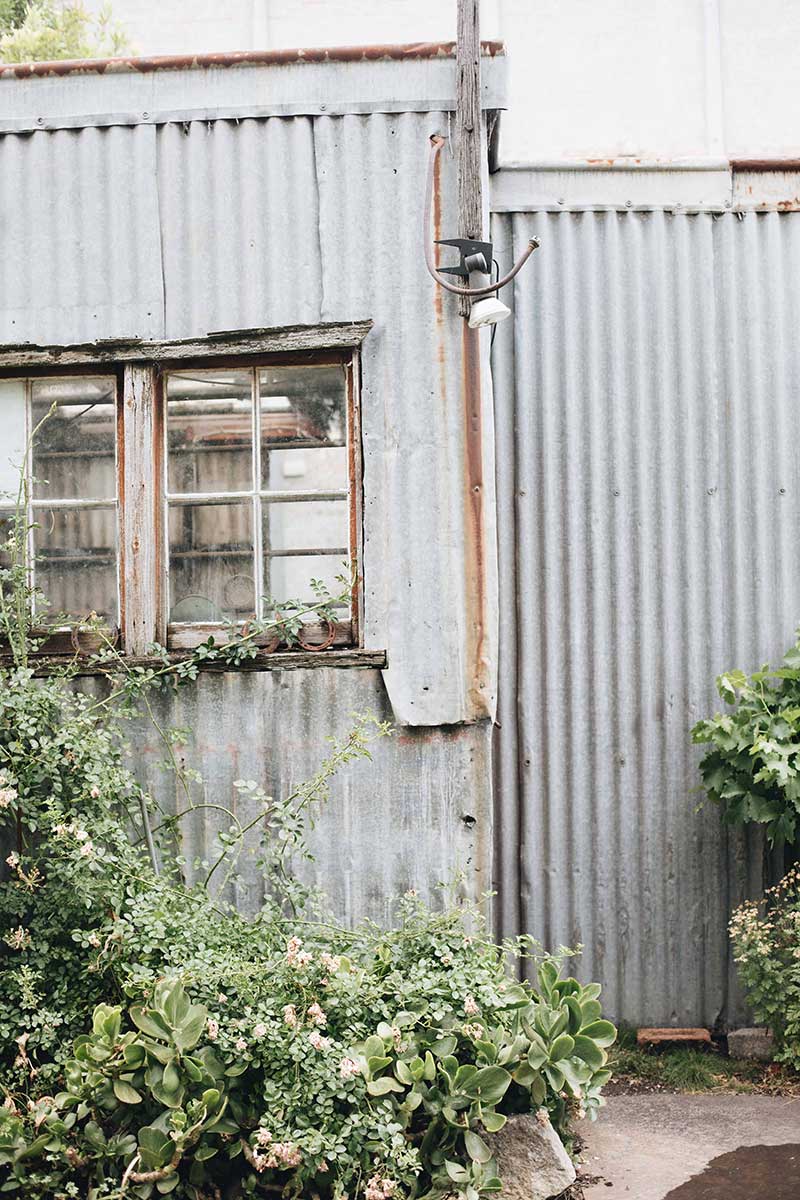
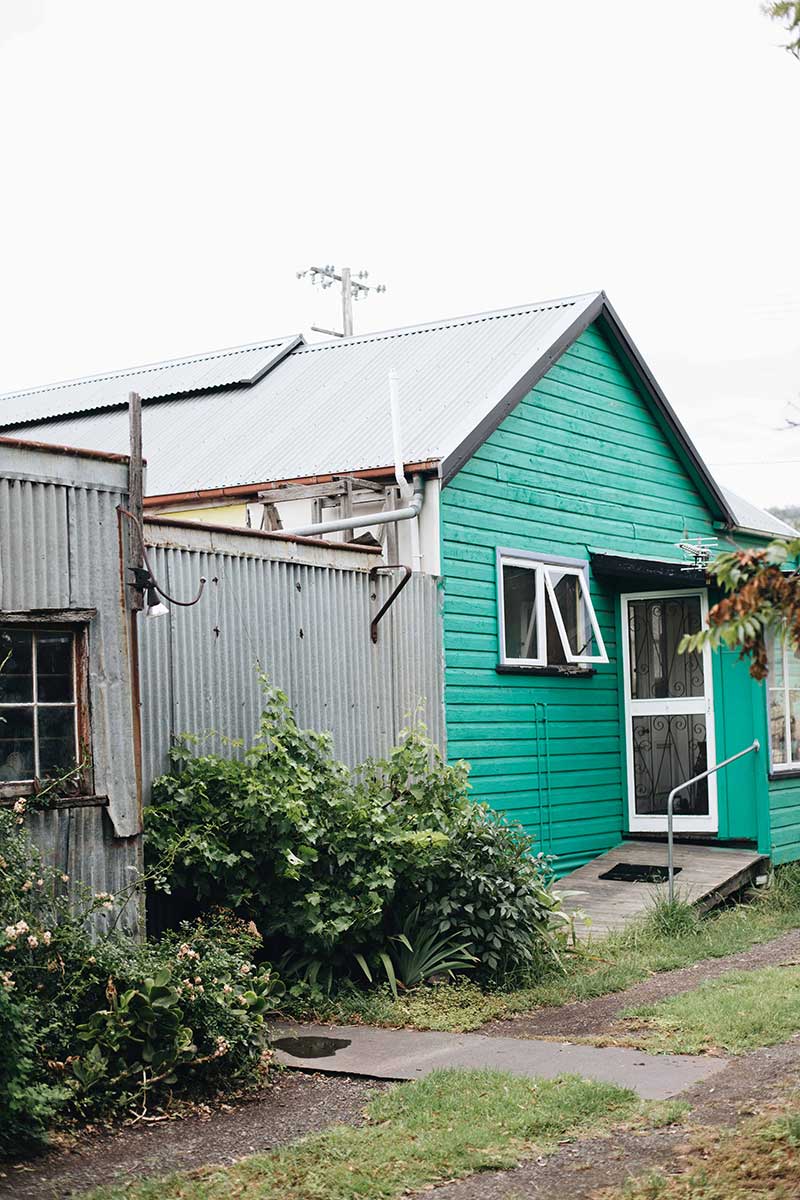
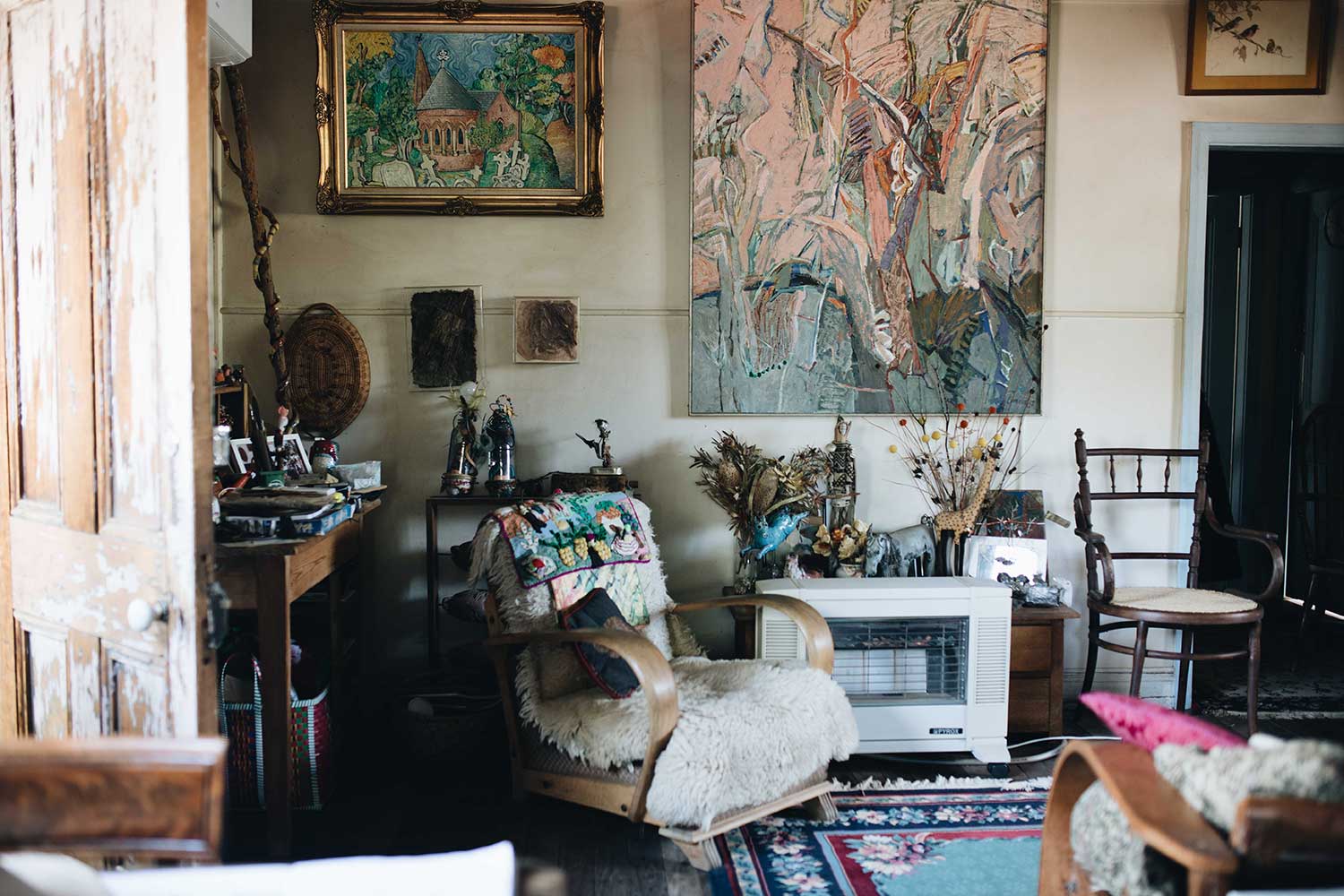

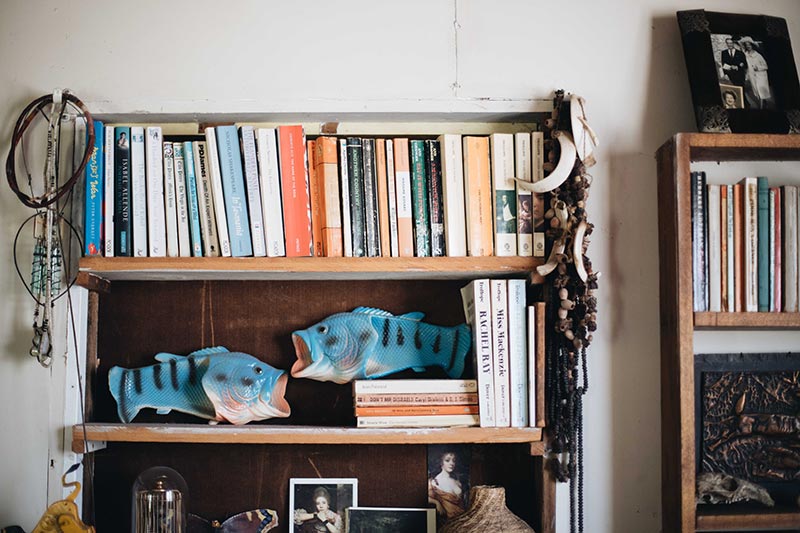


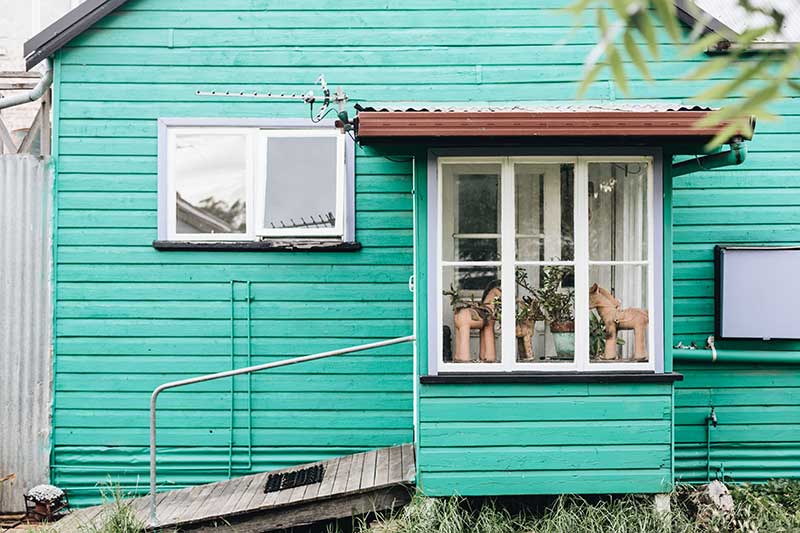
The bikes mounted on the corrugated iron fence lining one of Murrurundi’s side streets are the first clue that the woman residing behind it is a little out of the ordinary. Charlotte Drake-Brockman first visited the town in 1979 and bought a building on the main road a year later — “It was only $7,000,” she exclaims delightedly. At the sound of the 87-year-old’s voice, a small brown and white dog emerges from under a chair to see what all the fuss is about and spends the rest of our visit gazing devotedly at Charlotte. On a wall nearby hangs a painting of this loyal canine companion, flanked by a drawing of an elephant on one side and a racehorse in full flight on the other.
With weatherboards painted a vibrant Caribbean turquoise on one side wall, the house is a creative maze that reflects the multi-disciplinary approach of its owner. Inside, nearly every surface is home to a collection of objects artfully arranged — something many wouldn’t notice at first glance. Pieces of coral and a bear made from shells sit on a pine meat chest with a small menagerie of other figurines near the kitchen. On the living room shelves, the orange spines of Penguin paperbacks sidle up to blue ceramic carp, all mixed together with art magazines and the odd crime thriller.
Born in England, Charlotte came to Australia in 1964 after studying at the Farnham School of Art and working at the Byram Shaw School of Art (which was later absorbed into Central Saint Martins). After working in Sydney, she eventually moved to Murrurundi with her partner Viv Carter, the well-known jazz drummer, in search of a more sustainable lifestyle. Charlotte returned to art school — this time at the University of Newcastle and then taught at TAFE until her retirement.
In her first year in Murrurundi, Charlotte got a job handing out the census and met another artist, Fran Wachtel, and so began a creative partnership that was to last decades. The pair made the large steel sculptures at the town’s entrance and collaborated on several exhibitions together while also running Chicken in the Window, a gallery specialising in recycled tin work.
To step into Charlotte’s studio, is to enter a magical place. Cardboard galleons sail across the floor and metal pirate ships with rigging made from beaded necklaces lean on a table. Puppets hang against a weathered cupboard, painted the colour of storm clouds rolling in, and canvases thick with layers of paint are propped on old chairs. Metal figures stand mounted on tuna tins while, a battered corrugated iron sheep is adorned with a royal blue and gold rosette for first prize at the Scone Art Prize in 2015. A crucifix, studded with costume jewellery, hangs on a wall nearby and a panel hung with spanners looks like an installation piece — and perhaps it is.
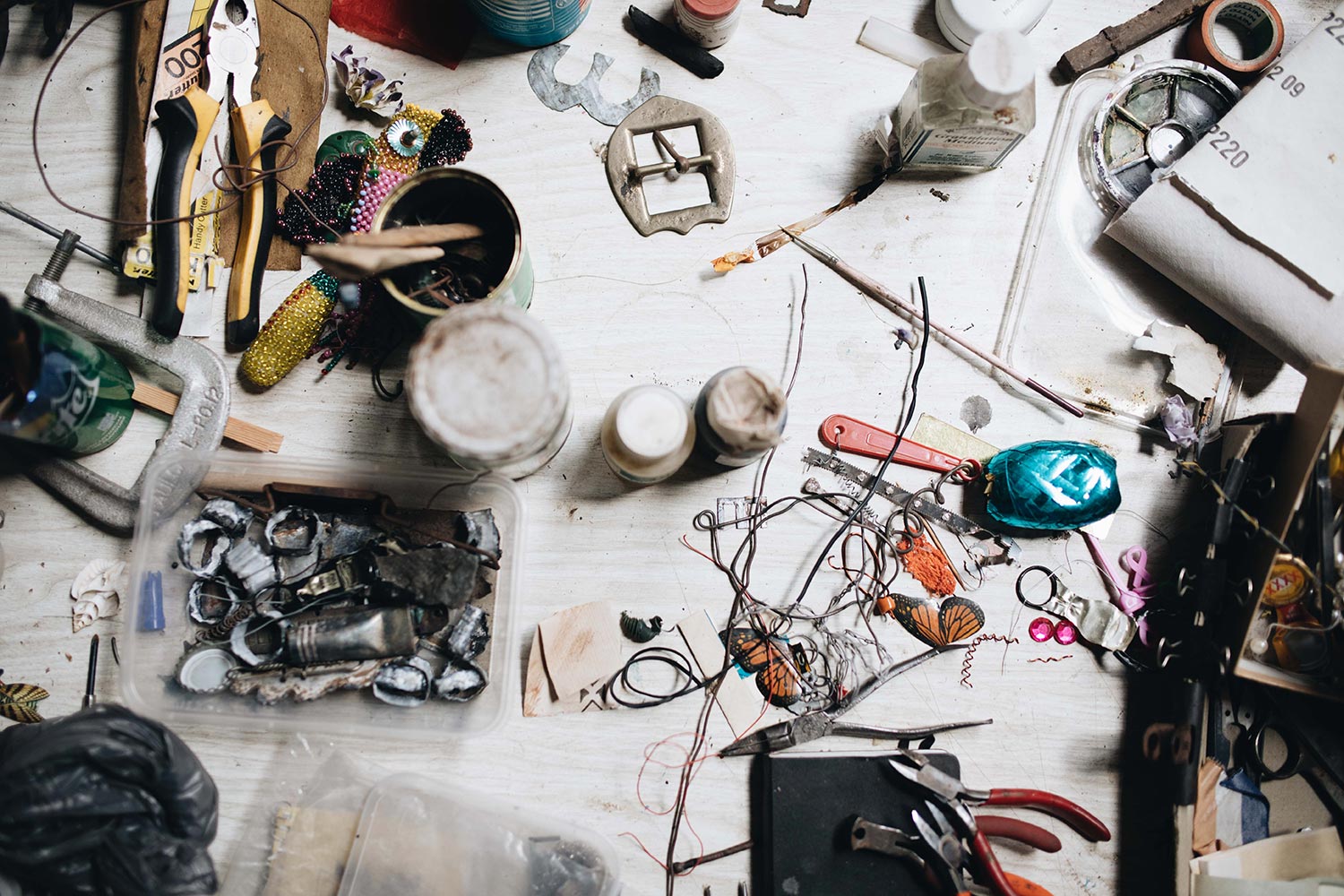
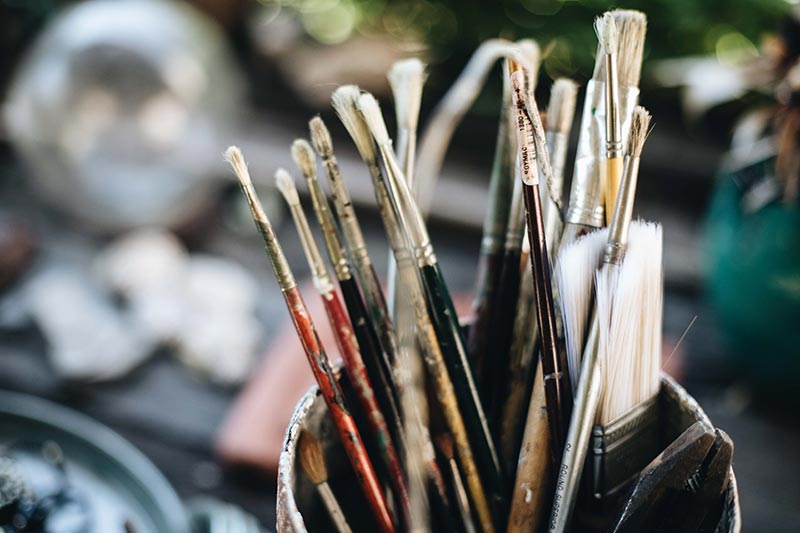

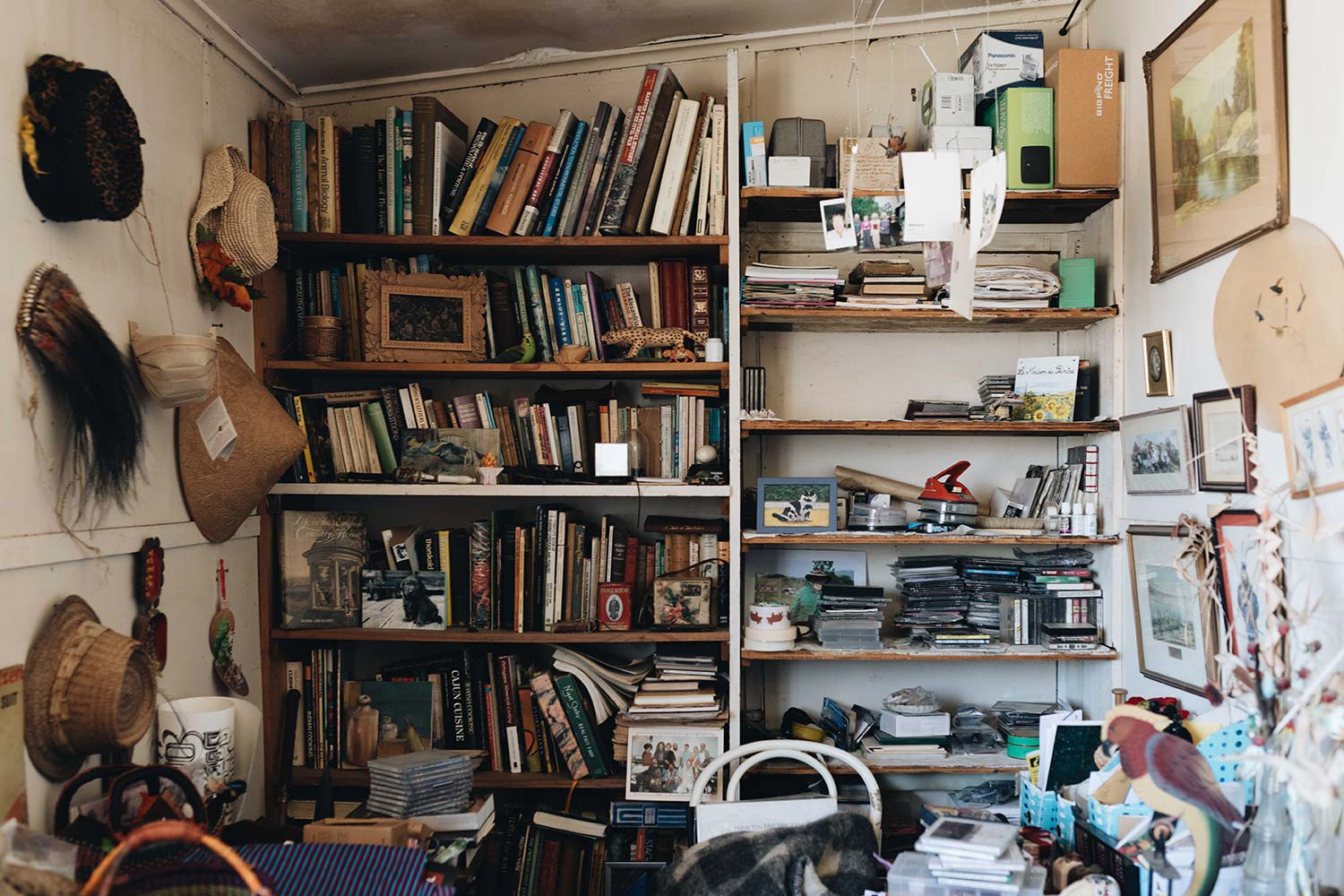
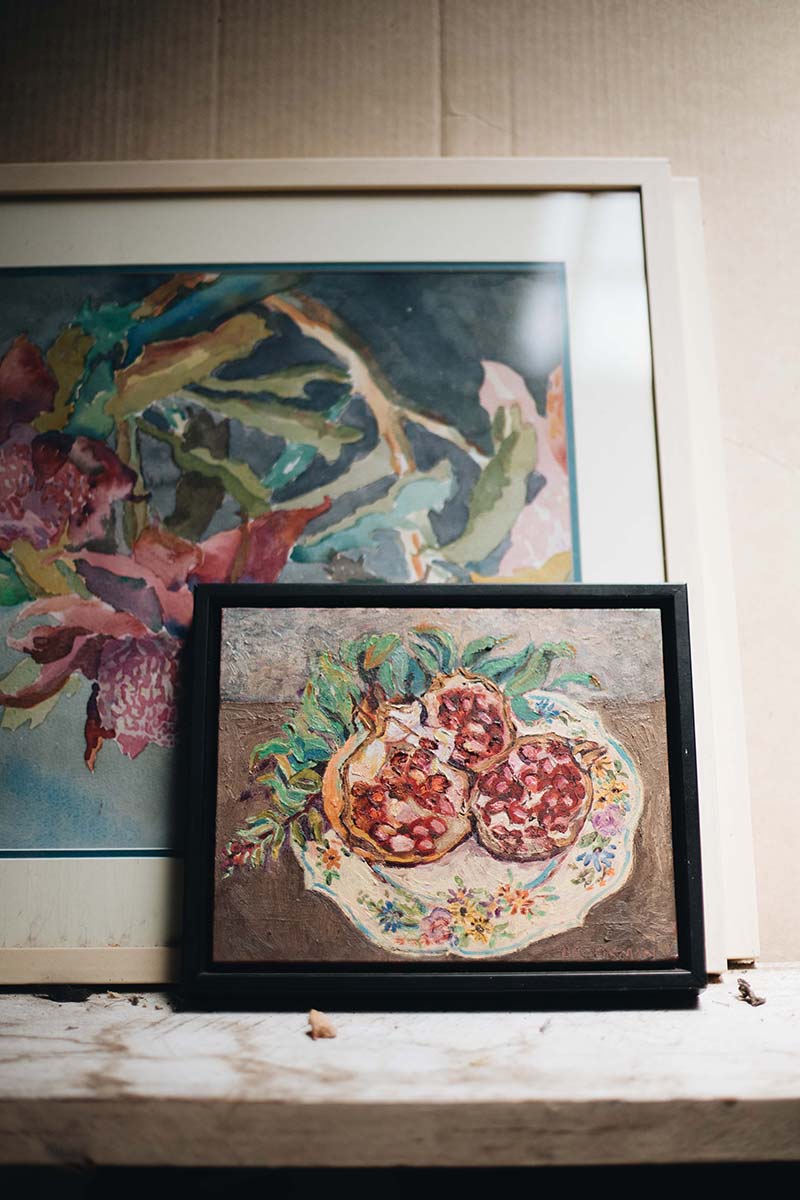
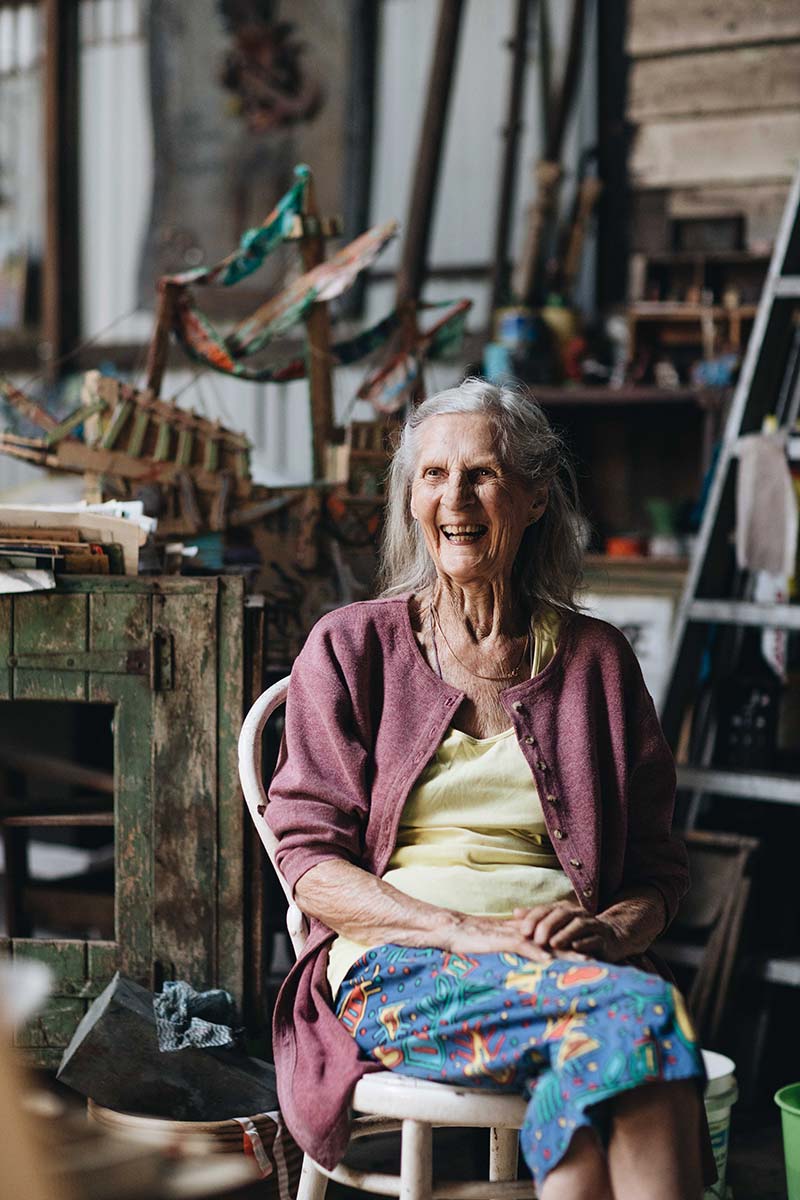
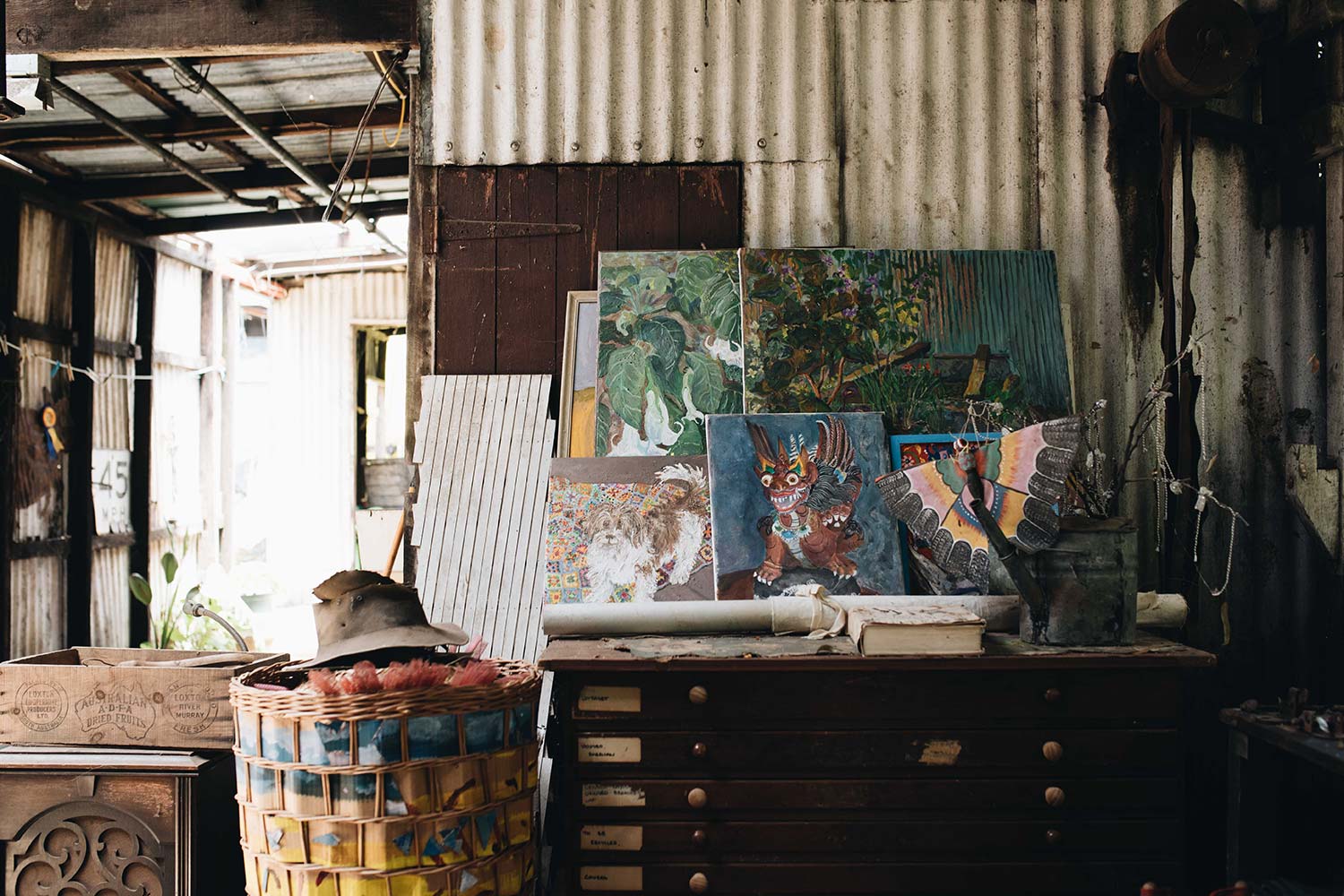
“Tall, angular, warm and inquisitive — all the very elements of Charlotte herself -— can be found in some small way in her cottage cum warehouse,” says Michael Reid when asked to describe one of his visits to Charlotte’s studio.
“There are circus posters and a marionette, illuminated by shafts of roof light. All these things are the layers of an honest and creative life. Fine dust raises up like floating dots before your eyes as you walk through her sheds. Charlotte lives in a raw and magic world, beguiling to young children and adults alike.”
Her strong character led to another local artist, David Darcy, painting her portrait for the Archibald in 2018. “I thought why not when Dave asked me and it was a lot of fun,” she says. A second portrait painted by Darcy won the People’s Choice Award at the 2021 Muswellbrook Art Prize.
Later, after my visit with Charlotte, I came across this observation from artist Inga Girvan Hunter about her friend’s work that she wrote for Balance?, the 2012 exhibition Charlotte had with Fran Wachtel at the Maitland Regional Art Gallery.
“I”ve known Charlotte since the 1970s when she came into one of my dye workshops and made a huge piece of painted batik the size of a large wall. That’s Charlotte: larger than life, and an unusually imaginative and versatile artist,” writes Hunter in the catalogue.
“She works in a large variety of media — from classical paintings to welded iron. She makes insane insects out of plastic bags and beads, which are so filled with character that you can’t help laughing. She makes cats out of electrical gadgets and hair curlers, books out of beer cans, and can paint a mean cabbage, a frequent artist’s model. I own a lot of her works, but my very favourite is a large lead ship with beaded copper rigging. The crew is made of sardine can lids and consists of Charlotte and I — both with literally silicone breasts — my husband and several others, together with two haughty cats [made from the pop-tops of drink cans] who sit in the rigging. There are not enough artists who can make you laugh with joy, and we must treasure them — as I treasure Charlotte.”
Actor and clown Jean-Paul Bell, who moved to the town a few years ago, agrees. “Charlotte is one of Murrurundi’s living treasures and the arts community is keen to help her continue to thrive knowing that it takes a village to support an artist.”
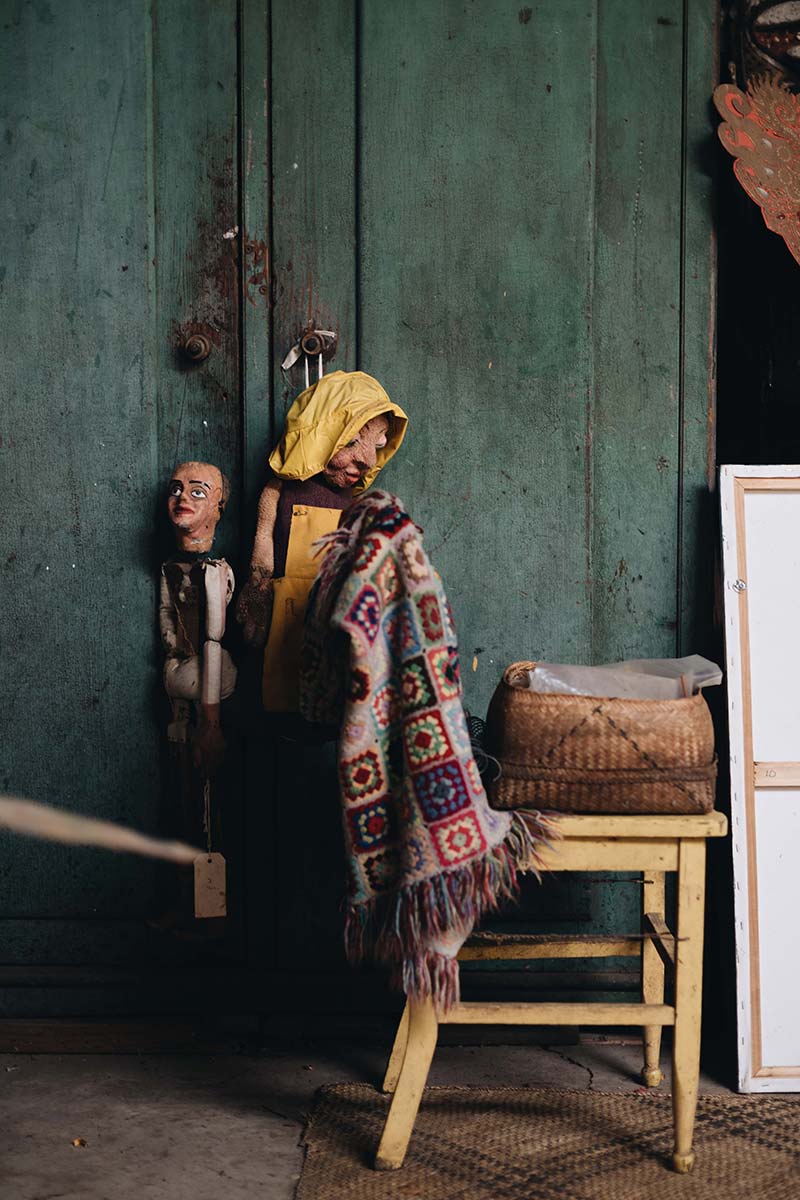
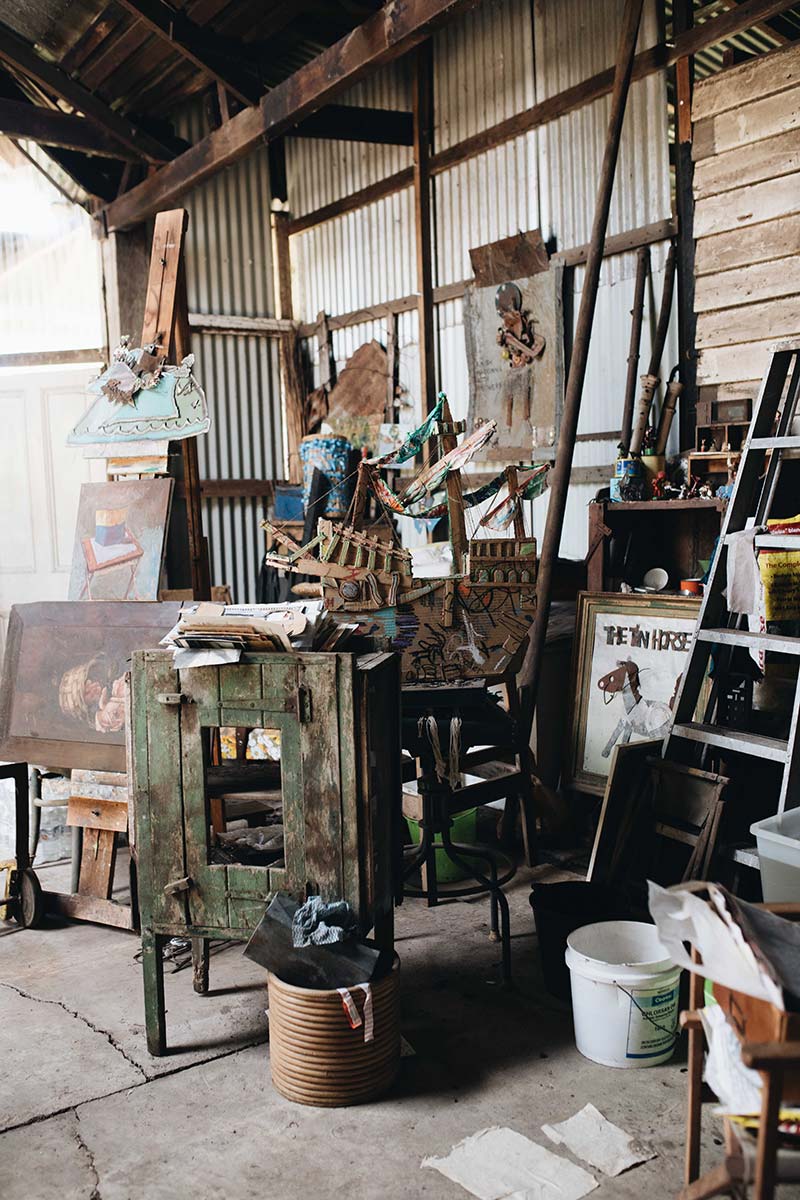
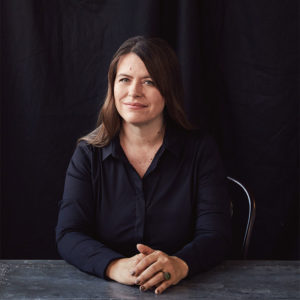
Victoria Carey
Finding Charlotte was a bit of a challenge. “Luckily we bumped into Charlotte on the street and she invited us back to her studio. She was very kind and generous — it was delight to spend some time with her,” explains this Katoomba-based writer.
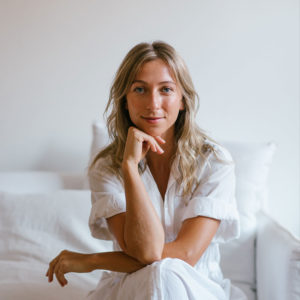
Nicola Sevitt
The shoot in Charlotte’s studio is one of this Sydney photographer’s favourites to date. “Charlotte herself became like a piece of her artwork when I was shooting her portrait. And I loved hearing about her journey through life — she has had so many incredible experiences,” she says.
- XXXVIII LA Story by Michael Reid OAM April 2024
- XLIX Paddy’s Cottage November 2025
- XLVIII Washington DC by Michael Reid OAM November 2025
- XLVII The Outdoor Fireplace at Murrurundi by Michael Reid OAM October 2025
- XLVI Amelia Zander of Zander & Co. July 2025
- XLV Marlie Draught Horse Stud by Michael Sharp June 2025
- XLIV Trump Engulfed the Fires by Michael Reid OAM February 2025
- XLIII Newcastle by Jason Mowen October 2024
- XLII The Business of Gardening by Michael Reid OAM September 2024
- XLI Carly Le Cerf by Sarah Hetherington August 2024
- XL Pecora Dairy by Michael Sharp July 2024
- XXXIX Joseph McGlennon by Michael Reid OAM May 2024
- XXXVII Julz Beresford by Michael Sharp March 2024
- XXXVI Sydney Contemporary by Jason Mowen February 2024
- XXXV The US of A by Michael Reid OAM December 2023
- XXXIV Scone Grammar School’s principal Paul Smart by Victoria Carey November 2023
- XXXIII AgQuip by Jason Mowen October 2023
- XXXII Tinagroo Stock Horse’s Jill Macintyre by Victoria Carey September 2023
- XXXI The Old Gundy School House by Victoria Carey August 2023
- XXX Annette English by Victoria Carey July 2023
- XXIX The Ghan by Jason Mowen June 2023
- XXVIII All in the family: The Arnotts May 2023
- XXVII A Capital Plan by Jason Mowen March 2023
- XXVI Mandy Archibald March 2023
- XXV Paul West February 2023
- XXIV The Other Newcastle by Jason Mowen January 2023
- XXIII Mount Woolooma Glasshouse at Belltrees December 2022
- XXII Murrurundi to Matino: with Jason Mowen November 2022
- XXI James Stokes October 2022
- XX Adelaide Bragg September 2022
- XIX Tamara Dean August 2022
- XVIII Going home: Angus Street July 2022
- XVII Belltrees Public School June 2022
- XVI A Road Trip on the New England Highway May 2022
- XV David and Jennifer Bettington: from horses to houses April 2022
- XIV Denise Faulkner: Art of the Garden March 2022
- XIII Childhood memories: Willa Arantz February 2022
- XII Riding ahead: Giddiup January 2022
- XI Ingrid Weir’s rural life December 2021
- X Life by design: William Zuccon November 2021
- IX Life on the land: The Whites October 2021
- VIII Goonoo Goonoo Station September 2021
- VII Murrurundi: a garden playground August 2021
- VI Pat’s Kitchen July 2021
- V A creative life: Charlotte Drake-Brockman June 2021
- IV Magpie Gin May 2021
- III The Cottage, Scone April 2021
- II At home with Jason Mowen March 2021
- I A town that performs February 2021









